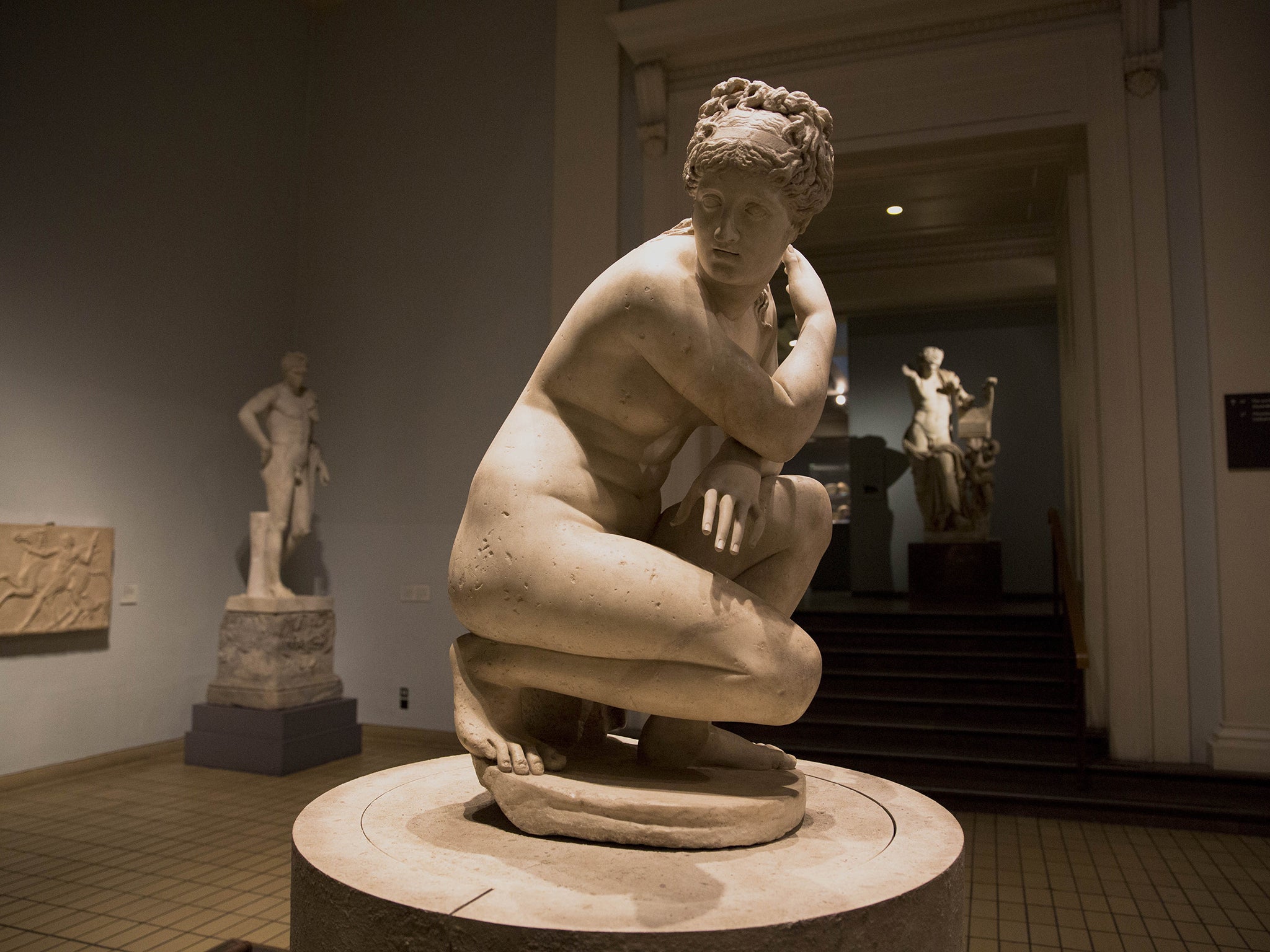Vatican to loan famed Belvedere Torso to British Museum
Sculpture that inspired Michelangelo's Sistine Chapel visits Britain for the first time

Adam reaching out to God across the ceiling of the Sistine Chapel ranks among the most famous details of any work in the history of Western art.
Now the sculpture that inspired Michelangelo’s painting The Creation of Adam is to travel to the UK for the first time for a forthcoming British Museum exhibition about the human body in ancient Greek art.
According to Neil MacGregor, the director of the British Mseum, the display of “beautiful works” will demonstrate that the modern human obsession with the perfect body is nothing new.
The Vatican Museum has agreed to lend the Belvedere Torso, which experts have suggested may depict Heracles, the mascluine hero of Greek mythology, for its show “Defining Beauty: The Body In Ancient Greek Art”. Mr MacGregor called it “one of the great sculptures of antiquity that shaped how people thought about the human body”.
The work dates to the 1st century BC, and is signed by the Athenian sculptor Apollonios, although it is actually a Roman copy of the original.It will be paired with the only surviving study Michelangelo made for the figure of Adam that he painted in the Sistine Chapel, which is in the British Museum collection.

The Florentine artist saw the torso as the finest fragment of classical sculpture that could be seen in his day, and refused the Vatican’s demands that he restore the work. Instead, Mr MacGregor said, Michelangelo studied the torso for The Creation of Adam, which he painted in about 1512, depicting God breathing life into the first man. Mr MacGregor said: “It is a loan of astonishing importance. Until the Parthenon sculptures came to London, that was the most important Greek body in Europe.”
Dr Ian Jenkins, the senior curator of ancient Greek works at the museum, said. “Michelangelo spoke about it as if it was a model. He talked about its extreme understanding of human physique, and at the same time he said there was a principle in it.”
Also on display among the 150 objects will be a 7cm tall bronze figurine that Dr Jenkins described as the “beginning of narrative sculpture”. The curator discovered the statuette, dating from 750 BC, in storage at the museum in 1996 and immediately realised its significance. It depicts the Greek hero Ajax in the act of stabbing himself. “This is the first identifiable figure from Greek myth,” he said. “I love it for its symbolism and its desire to tell a story.”
Mr MacGregor said the sculptures of Greek athletes and heroes had the bodies “everyone wants to have”, adding: “It is one of the great achievements of this particular art form that it has become the currency of daily life, from Bondi Beach to California and in between.”
Another prize exhibit, on loan from Croatia, is a figure of a nude athlete scraping his body with a strigil – a metal tool used by Greek and Roman athletes after exercise to remove dirt, perspiration, and oil before bathing. The statue was raised off the seabed near Losinj in 1999 and is travelling to Britain for the first time.
Mr MacGregor said: “This exhibition will be a celebration of the beauty and ideals of ancient Greek art. Some of the most beautiful works in the world will be brought together for the first time in a narrative exploring the highest achievements of ancient Greek artists and philosophers, exploring what it is to be human.”
The show will also include six of the museum’s so-called Elgin Marbles – a series of carved marble inscriptions and architectural pieces that originally formed part of the temple of Parthenon and other buildings on the Acropolis of Athens. They will be taken out of their permanent gallery and placed in the temporary exhibition to give them a “different narrative from their usual context”.
The marbles were created by Phidias, one of the three great sculptors of the age alongside Myron and Polykleitos, who were said to have trained in the workshop of a single master and, according to the British Museum, were “each motivated by a strong impulse to outdo the other”.
Dr Jenkins said the Greeks’ focus on nudity in sculpture did not exist in any other ancient civilisation. He added: “To the Persians, Assyrians and Egyptians, nudity was shameful; but to the Greeks it was the mark of the hero.”
A loan of one of the Elgin Marbles to Russia has re-opened diplomatic wounds between Britain and Greece, which wants the friezes returned to Athens. Despite the diplomatic fallout, Mr MacGregor said relations with Greek cultural institutions remained strong, and the British Museum hoped to borrow a piece for the exhibition from the Museum of Cycladic Art in Athens. “We are waiting to hear,” he added.
Defining beauty: The body in Ancient Greek Art” is at the British Museum, London, from 26 March to 5 July
Join our commenting forum
Join thought-provoking conversations, follow other Independent readers and see their replies
Comments